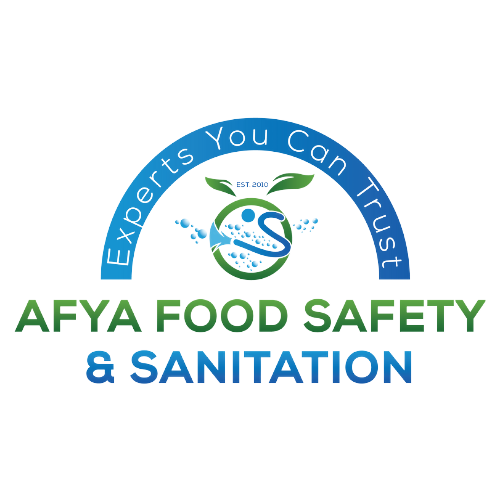
Please Wait For Loading

Please Wait For Loading
Maryland, MD USA
+1 (443) 666-9132
info@afyafoodsafety.com
Opening Hours: 9:00 AM - 5:00 PM
Copyright ©Afya Food Safety all rights reserved.
You can also reach us via Phone: +1 443 666 9132 or via Email:info@afyafoodsafety.com
5 Hidden Dangers of Poor Sanitation in Restaurants
Every customer expects a clean and hygienic environment when eating out, where they can enjoy their meals without apprehension. However, poor sanitation in restaurants comes with serious risks that may not be apparent to the patron but have disastrous consequences for health, safety, and a restaurant’s reputation. This blog will explore some hidden dangers of poor sanitation and why hygiene standards cannot be compromised in the food industry.
Poor sanitation is the major cause of foodborne illness. If restaurants don’t maintain cleanliness around food preparation areas, equipment, and storage facilities, it can give way to harmful bacteria like Salmonella, E. coli, and Listeria. These bacteria contaminate food and further cause serious illness that leads to hospitalization or sometimes death.
The World Health Organization reports that annually, millions of people are afflicted with foodborne diseases, which become a great burden to the economy and public health
Poor sanitation offers an ideal breeding ground for pests like rodents, cockroaches, and flies. These unwanted guests can spread diseases and damage a restaurant’s reputation. This mainly happens when food remains, grease, or trash accumulates in the kitchen or dining areas.
Pests can contaminate food and surfaces with droppings, urine, or saliva, introducing pathogens that can harm diners. A single pest sighting can also lead to negative reviews, health department violations, and even closure.
Restaurants that do not maintain proper hygiene standards face severe legal and financial consequences. Health departments conduct routine inspections of food establishments to ensure compliance with sanitation regulations. Violations may lead to significant fines, temporary closures, or permanent shutdowns.
Today’s Digital Age: Reviews and social media posts about an unsavory restaurant go viral. Accusations of unsanitary conditions or actual foodborne illnesses become widespread almost overnight, destroying reputations.
Accountability and responsiveness to sanitary concerns, which include listening to the customers, indicate a sense of responsibility and professionalism in implementing needed change.
Poor sanitation affects customers and employees alike. A filthy and disorganized workplace is prone to slips, trips, and falls, while unsanitary conditions expose employees to dangerous bacteria and allergens.
Sickly employees will need to take sick leaves, which could result in an understaffed shift and poor productivity. A clean workplace leads to a healthier and more energetic workforce.
The Importance of Proactive Sanitation Practices
The hidden dangers of poor sanitation can only be prevented by being proactive in cleanliness and hygiene. Restaurants should implement strict sanitation protocols, including:
1.·Regular Cleaning and Disinfection
2.·Employee Training
3.·Waste Management
4.·Pest Control
5.·Health Inspections
Conclusion
Poor restaurant sanitation is more than a mess; it’s a danger that lurks beneath the surface. The risks are enormous, from foodborne illness to legal action, and even reputational damage. By emphasizing cleanliness and hygiene, restaurants assure customers a safe dining experience, employee protection, and a stellar reputation. After all, a clean restaurant isn’t just good for business, it’s a cornerstone of public health.
Related Posts
Categories
2 Tips To Proper Handling and Cooking of Poultry
February 4, 20255 Hidden Dangers of Poor Sanitation in Restaurants
January 17, 2025Calender